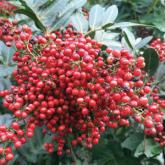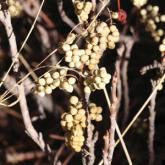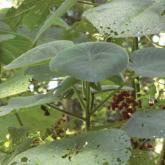Article

Brazilian Peppertree: Watch Out for This Lesser-Known Relative of Poison Ivy
- Author:
- Stephanie M. Waggett, BS
- Thomas W. McGovern, MD
Similar to fellow family members poison ivy and poison oak, Brazilian peppertree causes allergic contact dermatitis in susceptible individuals....
Article

Aquatic Antagonists: Seaweed Dermatitis (Lyngbya majuscula)
- Author:
- Kathleen L. Hill, MD
- Haley M. Fulton, MD
- Thomas W. McGovern, MD
As oceans warm, Lyngbya majuscula will bloom more frequently; therefore, public awareness of L majuscula and seaweed dermatitis...
Article

Botanical Briefs: Fig Phytophotodermatitis (Ficus carica)
- Author:
- Catherine Shirer Barker, MD
- Thomas W. McGovern, MD
- Dirk M. Elston, MD
Exposure to the components of the common fig tree (Ficus carica) can induce phytophotodermatitis.
Article

Botanical Briefs: Contact Dermatitis Induced by Western Poison Ivy (Toxicodendron rydbergii)
- Author:
- Shawn Afvari, BS
- Dirk M. Elston, MD
- Thomas W. McGovern, MD
Western poison ivy (Toxicodendron rydbergii) accounts for many of the cases of Toxicodendron contact dermatitis (TCD) in the...
Article

Botanical Briefs: Australian Stinging Tree (Dendrocnide moroides)
- Author:
- Ansley C. DeVore, MD
- Thomas W. McGovern, MD
Dendrocnide moroides is arguably the most brutal of stinging plants, even leading to death in dogs, horses, and humans in rare cases.
